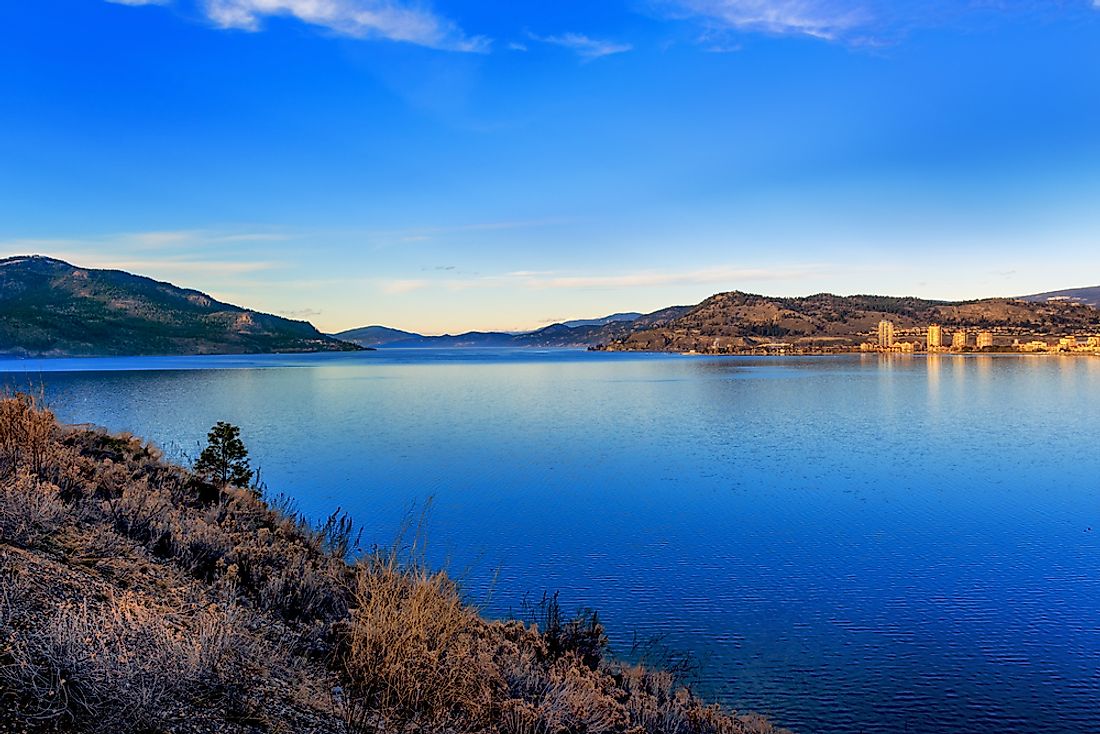How Are Lakes Classified On The Basis Of Thermal Stratification?

Geologists and hydrologists have classified lakes on the basis of thermal stratification. Thermal stratification is the process of dividing the water in the lakes into layers with each stratum having unique characteristics like changes in water temperatures and density. Using this classification, lakes can be divided into three main categories: holomictic lakes, meromictic lakes, and amictic lakes.
Holomictic Lakes
Holomictic lakes have with uniform density and temperature regardless of depth in a particular period of the year. The majority of the lakes in the world are holomictic. Holomictic lakes exist in three distinct types, and they include monomictic lakes, dimictic lakes, and polymictic lakes.
Monomictic Lakes
Monomictic lakes are holomictic and its water mixes from the top to bottom of the lake in one mixing period per year. Monomictic lakes can be further divided into two consisting of cold monomictic lakes and warm monomictic lakes. Some examples of monomictic lakes include; Lake Turkana, Sea of Galilee, Okanagan Lake, and Lake Titicaca.
Dimictic Lakes
Dimictic lakes are the type of holomictic lakes whose waters mix from top to bottom of the lake in two mixing periods of each year. Dimictic lakes are found in temperate regions and are covered by ice during winter. In the summer, the lakes are thermally stratified so that the warm surface water is separated from the relatively colder waters beneath. The waters mix during spring and autumn which results in the lakes being isothermal.
Polymictic Lakes
Polymictic lakes are holomictic and have shallow waters with the small depth preventing the development of thermal stratification in the lakes and therefore the waters mix regardless of the season. Polymictic lakes can be divided into two distinct types which are temperature-defined: warm polymictic lakes and cold polymictic lakes.
Meromictic Lakes
The second classification of lakes based on thermal stratification is meromictic. Meromictic lakes have layers of water that do not intermix. Due to the absence of intermixing of the water, the bottom layer of the lake contains no dissolved oxygen and is therefore largely devoid of life except for the purple sulfur bacteria. Also, due to the lack of any disturbance on the layer of sediment found on the bottom of such lakes leads to the formation of lacustrine varves. The waters of meromictic lakes are divided into three layers and the top layer being the mixolimnion while the bottom layer is known as the monimolimnion. The layer between the two is known as the chemocline. Meromictic lakes are few in the world compared to holomictic lakes with some examples being Lake Tanganyika (the deepest lake in Africa), Lake Kivu, Kaptai Lake, Jellyfish Lake, Lake Cadagno, the Great Salt Lake, and the Lower Mystic Lake.
Amictic Lakes
Amictic lakes have water whose surface is covered with ice throughout the year which prevents the mixing of the waters beneath, and therefore allowing such lakes to exhibit inverse cold water stratification where water temperature increases with the increase in depth. Due to the extreme cold temperatures which characterize amictic lakes, such lakes are only found in the polar regions both in the Arctic as well as in Antarctica. There are also a few amictic lakes found in Greenland. One example of an amictic lake is Lake Vanda found in Antarctica.







